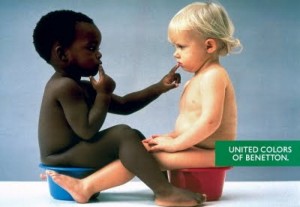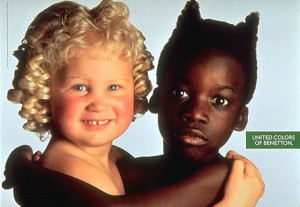Let me begin by admitting that, until a few months ago, I had little to no familiarity with the genre. It was the adaptation for the big screen of Divergent, which I accidentally watched in August on the flight that took me from Italy to New York, that sparked my curiosity towards YA dystopian narratives.
I was thus eager to dive into Brave New Teenagers, hoping it would provide me with the tools to get a better understanding, not only the hybrid nature of the YA dystopian genre, but more broadly, also of the recent flourishing of dystopian narratives in literary texts, as well as on screen. Even more than the increasing number of dystopian films and television shows, what made me realize the impact of the phenomenon was the way elements and tropes typical of the genre have been spilling into and seeping through different kinds of cultural texts. I think for example of the new chapters of the Godzilla, X-Men, and Planet of the Apes sagas, all of which came out in theaters in 2014, and portrayed far grimmer scenarios than the ones before them. A similar trend is noticeable on television, with shows such as Gotham, which aims to explore the city protected by Batman before Batman came around. Although Gotham is labeled primarily as a crime-drama television series, the representation of Gotham City as a urban dystopia (a tradition that started in the 1980s with Frank Miller’s comic book and Tim Burton’s film. See James Charles Mak, “In Search for an Urban Dystopia – Gotham City.”) reaches its climax in the show. Carissa Tuner Smiths’s essay (one of my favorites in the collection) and her brilliant reading of space-time embodiment in Incarceration, particularly reminded me of Gotham, because of the way the Arkham asylum, the island of Dr. Dulmacher, and other prison facilities are depicted in the show.
Talking about television, I find it interesting and surprising, however, that YA dystopian narratives have yet to conquer the medium’s programming. Despite the trend in the literary realm and on the big screen, and despite television itself has been abounding with dystopian narratives (I think for example of recent shows like Black Mirror, Continuum, Electric City, The Last Man on Earth, The Walking Dead), I cannot think of a single television show aimed at a young adult audience set in a dystopian world.
Returning to Brave New Teenagers, my high expectations did not set me up for disappointment. The essays it contains did not only shed light on the genre, but they also took me on a kaleidoscopic journey through theory and different methodologies. The book abounds with mindful insights and it offers a number of readings of YA dystopian texts from the past twenty years through approaches as varied as post-humanism, eco-criticism, Marxism, feminism and race theory. Furthermore, its different sections draw from disciplines and realms of knowledge as diverse as theology, urban studies, political science and philosophy.
Reading Brave New Teen Agers made me think of the YA dystopian genre as an antidote to the many cultural texts for teenagers developed around nostalgic narratives. I am referring in particular to television shows that depict the near past as a lost Golden Age, such as Freaks and Geeks, American Dreams, The Wonder Years, That 70s Show, or Happy Days. Both genres have a way of hinting at what is wrong with contemporary society, leaving us again at an intersection between entertainment, didacticism, and escapism. However, whereas nostalgic television shows idolize a comfortable past that cannot possibly be retrieved by the young viewers, YA dystopian narratives empower adolescents by putting the future in their own hands. In other words, in YA dystopias, the possibilities of a bleak future invite those who engage with the text to be active and bring about positive change in the world before it’s too late, instead than passively contemplate an inaccessible idealized past.
I was also attracted by the dichotomy between scarcity and excess (or abundance and sufficiency, as Elaine Ostry frames it on page 102) on which many of the novels discussed in Brave New Teenagers rely. It made me think of Herbert Marcuse, and the ideology of scarcity that he puts forward in both Civilization and Its Discontent and One Dimensional Man: Studies in the Ideology of Advanced Industrial Society. In his dialectical analyses, Marcuse positioned himself as an early questioner of abundance in Western society, and among the first social theorists to focus on it, at a time when scarcity was at the center of most theoretical approaches. Although I do not feel qualified to attempt it at this time and place, it would be interesting, and certainly challenging, to venture on a Marcusian reading of YA dystopian texts.
Although I did not agree 100% with all the readings, even the ones that I did not seem to agree with, I found plausible for the most part. Furthermore, not being familiar with most of the primary texts analyzed, it would be difficult for me to engage in productive criticism. However, a specific passage of Katherine Broad’s essay on The Hunger Game trilogy raised some questions for me. I found her reading of Katniss’s romances as catalysts of the story very astute and brilliant. Despite some exceptional moments of bravery, at times I too thought she was a passive heroine. However, I think Broad’s interpretation was a bit stretched when she confronts the theme of motherhood, the treatment of which I find particularly harsh.
Broad posits that “if the upshot of overthrowing a dystopian regime is being able to settle down and have kids, then whatever happens in the rest of the country will not involve Katniss.” (125) and again that “ultimately, the final image of complacent adulthood with husband and children suggests that Katniss’s instances of rebellion are permissible for girls, not for women.” (126) But if we do not get to see (or rather, exactly because we don’t get to see it) what the country is like after the revolution, then we may very well assume this new world is one that does not know injustices and oppression (i.e. a utopia). If that were the case, there would clearly be nothing for Katniss to rebel against. As Broad herself notes in her essay, the protagonist’s maternal desire, as well as her desire to settle down upon her return to District 12, gradually develop throughout the series, possibly because of the traumatic experiences she goes through and – despite the fears she shows in the Epilogue – because of the possibilities of a better life granted by the new (utopian?) regime. What I am getting at here, is that from Broad’s assumptions I gathered that motherhood necessarily removes all agency from a woman. I thus wonder – does a female character have to be denied any desire towards the possibility of reproduction in order to be a feminist heroine?



